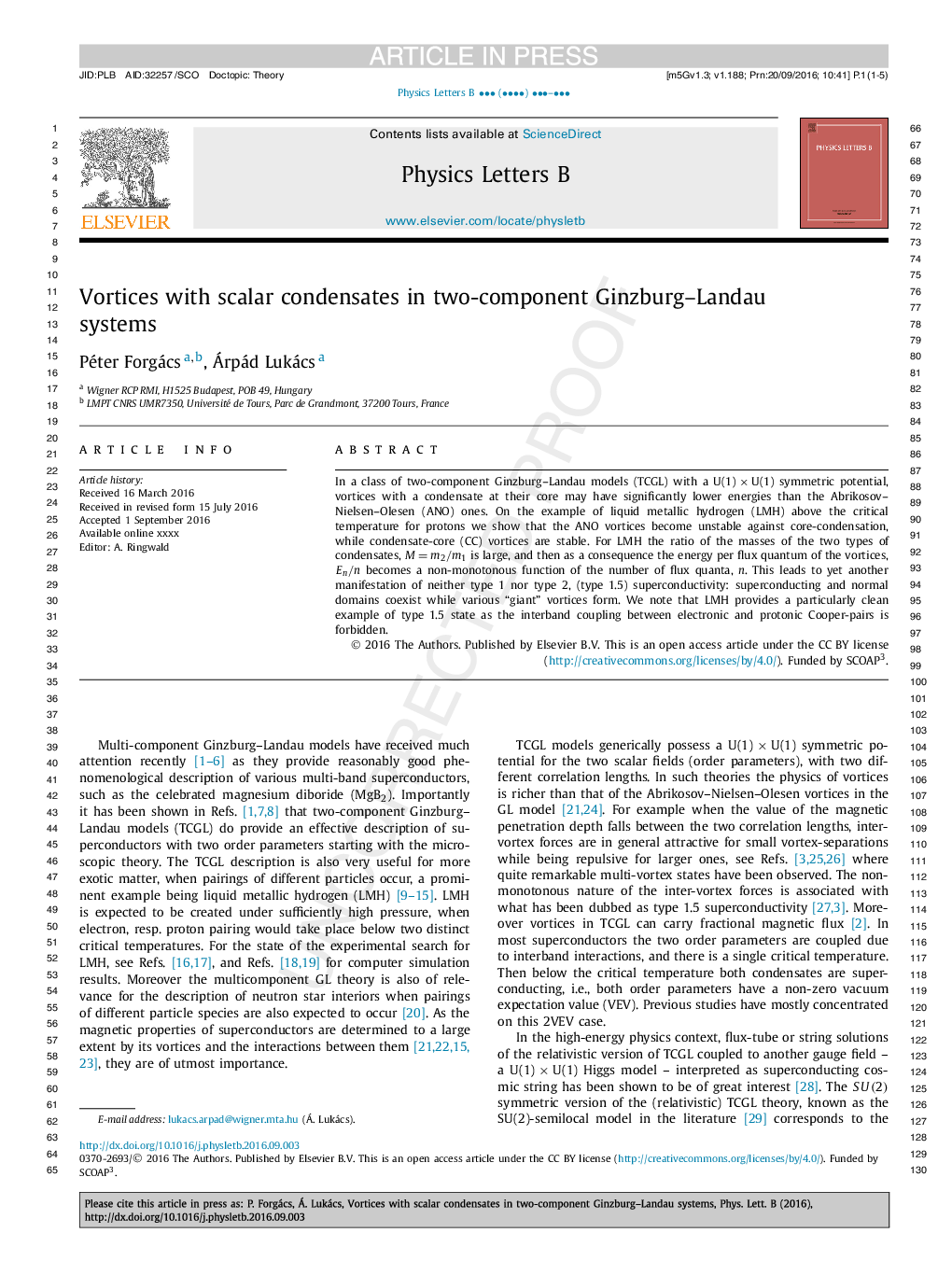| Article ID | Journal | Published Year | Pages | File Type |
|---|---|---|---|---|
| 5495551 | Physics Letters B | 2016 | 5 Pages |
Abstract
In a class of two-component Ginzburg-Landau models (TCGL) with a U(1)Â ÃÂ U(1) symmetric potential, vortices with a condensate at their core may have significantly lower energies than the Abrikosov-Nielsen-Olesen (ANO) ones. On the example of liquid metallic hydrogen (LMH) above the critical temperature for protons we show that the ANO vortices become unstable against core-condensation, while condensate-core (CC) vortices are stable. For LMH the ratio of the masses of the two types of condensates, M=m2/m1 is large, and then as a consequence the energy per flux quantum of the vortices, En/n becomes a non-monotonous function of the number of flux quanta, n. This leads to yet another manifestation of neither type 1 nor type 2, (type 1.5) superconductivity: superconducting and normal domains coexist while various “giant” vortices form. We note that LMH provides a particularly clean example of type 1.5 state as the interband coupling between electronic and protonic Cooper-pairs is forbidden.
Related Topics
Physical Sciences and Engineering
Physics and Astronomy
Nuclear and High Energy Physics
Authors
Péter Forgács, Árpád Lukács,
